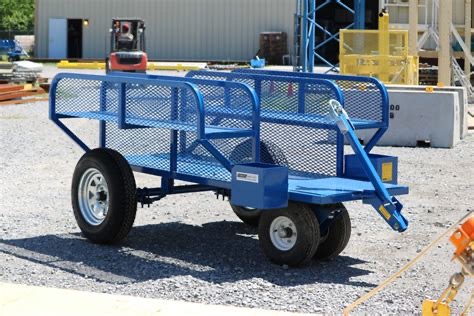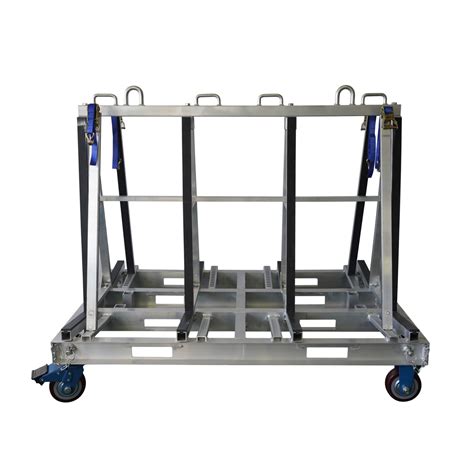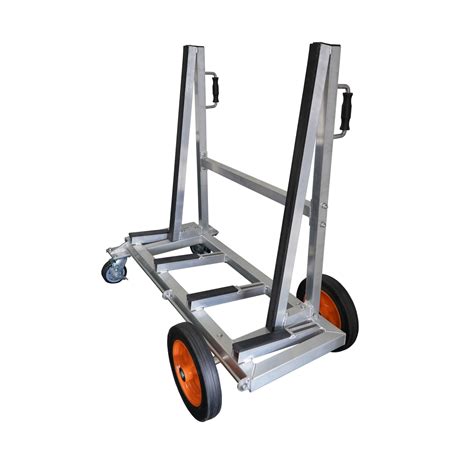Content Menu
● Understanding Scaffold Trolley Systems
● Key Safety Considerations for Scaffold Trolley Systems
● Advantages of Using a Scaffold Trolley System
● Potential Risks Associated with Scaffold Trolley Systems
● Mitigation Strategies for Potential Risks
● Conclusion
● FAQ
>> 1. What is a scaffold trolley system?
>> 2. What are the primary safety hazards associated with scaffold trolley systems?
>> 3. How can the risk of falls be mitigated when using a scaffold trolley system?
>> 4. What role does training play in ensuring the safe use of a scaffold trolley system?
>> 5. How often should a scaffold trolley system be inspected?
● Citations:
In high-rise construction, the safety of workers is of utmost importance. The nature of the work, involving significant heights and complex tasks, presents numerous challenges. A scaffold trolley system is a material-handling solution designed to improve efficiency, but its safety implications must be carefully considered. This article explores the safety aspects of using a scaffold trolley system in high-rise construction, examining potential risks and mitigation strategies.

Understanding Scaffold Trolley Systems
A scaffold trolley system is a horizontal track, typically suspended from a scaffold structure, that allows a trolley or hoist to move along its length. This system enables workers to lift and transport materials safely and efficiently across the scaffold platform[8]. By reducing the need for manual lifting and carrying, a scaffold trolley system can minimize the risk of strains, sprains, and other musculoskeletal injuries.
Key Safety Considerations for Scaffold Trolley Systems
1. Fall Protection:
- Falls are one of the most significant hazards associated with scaffolding[1]. Guardrails, midrails, and toeboards are essential on all open sides of the platform[1][3].
- Workers should use personal fall arrest systems (PFAS) such as harnesses and lanyards[1][9]. The fall arrest system must be independent of the scaffold trolley system[9].
- The scaffold trolley system itself should include components approved per EN795 for fall arrest[6].
2. Load Capacity:
- The scaffold trolley system must have a Safe Working Load (SWL) or Working Load Limit (WLL) clearly specified[6].
- Workers must be trained to never exceed the system's load capacity[6].
- The load capacity includes a safety factor of 4[8].
3. Stability:
- The scaffolding structure must be stable and erected on a level surface[3][5].
- Rolling scaffolds must have wheels locked to prevent unwanted movement[2][5].
- The height-to-base width ratio of a rolling scaffold should be 2:1 or less during movement[2].
4. Material Handling:
- Tools and materials must be secured to prevent them from falling and potentially injuring workers below[1].
- Secure storage areas should be implemented for tools and materials, and clear protocols established for transferring items to and from scaffolds[1].
- Movement-limiting devices should be used to prevent unintended movement of the scaffold[9].
5. Wind Conditions:
- Scaffolding must be designed to withstand strong winds[4].
- If mesh, netting, or knotted tarp is added to a scaffold structure, the design drawing must be re-engineered by a professional engineer to account for potential wind forces[3].
- The design engineer should specify the maximum wind speed at which operations should cease or when further precautions are required[9].
- A wind speed indicator may be provided on the platform[9].
6. Training and Supervision:
- Workers must be properly trained to erect and use rolling scaffolds[5].
- One person knowledgeable in erecting scaffolding should supervise the work[3].
- Training should include how to use the scaffold trolley system safely and effectively[6].
7. Inspection and Maintenance:
- Rolling scaffolds should be inspected before, during, and after each use[2][5].
- Damaged parts must be rejected and replaced as soon as possible[2].
- Regular maintenance is essential to ensure the racks remain safe and functional over time[6].
8. Emergency Preparedness:
- Evacuation plans and procedures must be in place in case of an emergency[4].
- The design should consider the loads induced by the fall arrest system on the permanent structure[9].
Advantages of Using a Scaffold Trolley System
1. Reduced Manual Handling:
- A scaffold trolley system reduces the need for workers to carry heavy loads manually, decreasing the risk of musculoskeletal injuries[6].
2. Increased Efficiency:
- Materials can be moved quickly and easily along the scaffold, increasing productivity and reducing project completion times[6].
3. Improved Space Utilization:
- By utilizing vertical space, a scaffold trolley system helps keep the work area organized and free from clutter[6].

Potential Risks Associated with Scaffold Trolley Systems
1. Overloading:
- Exceeding the system's load capacity can cause the trolley or track to fail, leading to dropped materials or even collapse[6].
2. Instability:
- If the scaffold structure is not stable or the scaffold trolley system is not properly installed, the entire system could become unstable, posing a significant risk to workers[3].
3. Falling Objects:
- If materials are not properly secured to the trolley, they could fall and injure workers below[1].
4. Collisions:
- The moving trolley could collide with workers or objects on the scaffold if not operated carefully[2].
Mitigation Strategies for Potential Risks
1. Strict Adherence to Load Limits:
- Clearly marked load limits and worker training on load limits are crucial[6].
2. Regular Inspections:
- Regular inspections of the scaffold trolley system and scaffold structure can identify potential problems before they lead to accidents[2][5].
3. Proper Installation:
- The scaffold trolley system must be installed according to the manufacturer's instructions and by qualified personnel[3][6].
4. Use of Safety Devices:
- Safety devices such as brakes, end stops, and anti-collision systems can help prevent accidents[6].
5. Worker Training:
- Workers must be thoroughly trained on the safe operation of the scaffold trolley system, including proper loading techniques, emergency procedures, and the importance of wearing appropriate PPE[5][6].
Conclusion
A scaffold trolley system can be a safe and efficient solution for material handling in high-rise construction, provided that proper safety measures are in place. By understanding the potential risks and implementing appropriate mitigation strategies, construction companies can harness the benefits of a scaffold trolley system while ensuring the safety and well-being of their workers. Prioritizing safety through comprehensive training, regular inspections, and strict adherence to safety regulations is essential to maximize the benefits and minimize the risks associated with using a scaffold trolley system in high-rise construction.

FAQ
1. What is a scaffold trolley system?
A scaffold trolley system is a horizontal track attached to scaffolding, designed to support and move materials using trolleys or hoists[8].
2. What are the primary safety hazards associated with scaffold trolley systems?
The primary safety hazards include falls, overloading, instability, falling objects, and collisions[1][2][6].
3. How can the risk of falls be mitigated when using a scaffold trolley system?
The risk of falls can be mitigated by using guardrails, midrails, toeboards, and personal fall arrest systems (PFAS)[1][3][9].
4. What role does training play in ensuring the safe use of a scaffold trolley system?
Proper training ensures that workers understand how to operate the system safely, including proper loading techniques, emergency procedures, and the importance of wearing appropriate PPE[5][6].
5. How often should a scaffold trolley system be inspected?
A scaffold trolley system should be inspected before, during, and after each use to identify and address any potential hazards[2][5].
Citations:
[1] https://www.canadasafetytraining.com/Safety_Blog/scaffolding-hazard-safety-practices.aspx
[2] https://www.onsitesafety.com/safety-articles/rolling-scaffolding-safety
[3] https://www.metaltech.co/setup-instructions/
[4] https://peakscaffolding.ca/scaffolding-for-toronto-high-rises/
[5] https://www.ccohs.ca/oshanswers/safety_haz/platforms/rollingscaffold.html
[6] https://niko.co.uk/bmcms/uploads/Scaffolding%20Runway%20Handbook%2006-2018.4.pdf
[7] https://www.ihsa.ca/rtf/health_safety_manual/pdfs/equipment/Scaffolds.pdf
[8] https://brandsafway.com/uploads/files/orn208_bsl_systems_scaffold_lifting_rig___underhung_trolleys_guide.pdf
[9] http://www.ontario.ca/page/guidelines-multi-point-suspended-scaffolds






















